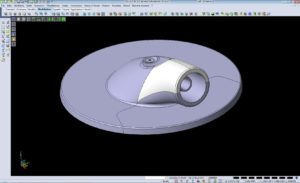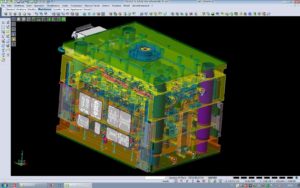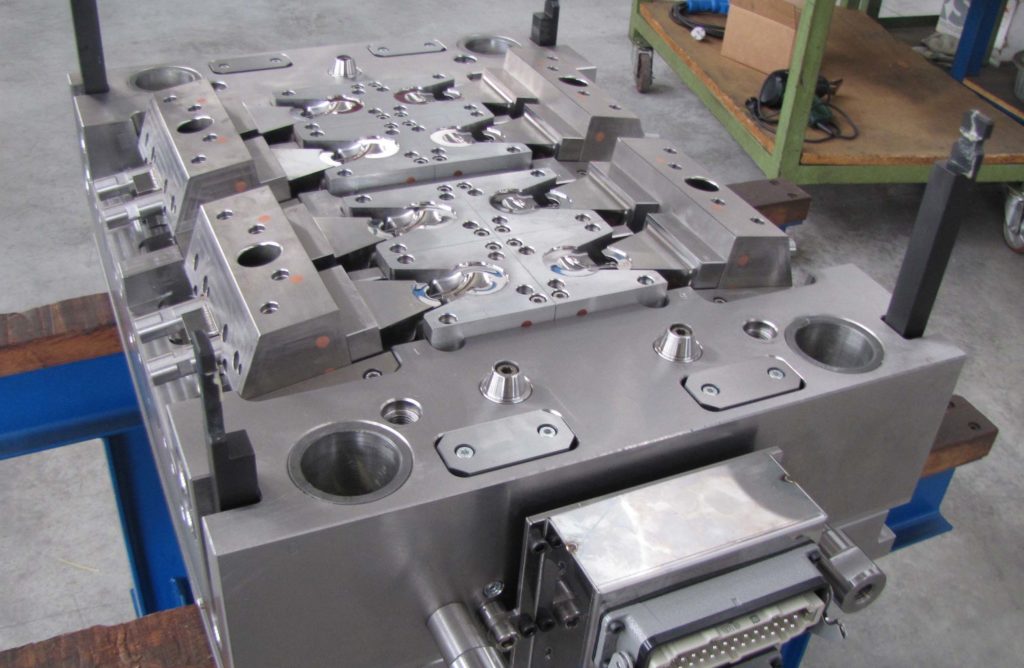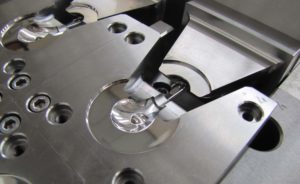Specialist says VISI means moulds should be called “advanced equipment”
A mould maker producing tools for thermoplastic materials and die-castings relies on the specialist VISI Analysis module to discover critical areas at an early stage of the design process, which greatly simplifies their work.
Mecca T.P. serves a variety of industry sectors, including medical, automotive, household appliances, furniture and eyewear. Co-owner Antonio Tognon says their moulds have to be produced swiftly and accurately, first time every time, without the need for changing them unless requested by the customer. “And in those cases, the amendments have to be carried out quickly.
“Using VISI to design and machine our mould tools means we can guarantee they’ll give a high mechanical performance with precision movements, along with a high aesthetic quality of the moulded products, for long production periods.”
He says they are also playing an increasingly more proactive role in working with customers to co-design the finished, moulded products. “And we support our customers with precision machining, mechanical equipment construction, reverse engineering and reconstruction of damaged mechanical parts, or without design documentation, as well as dimensional checks.”
Founded in 1985, the company is now run jointly by Antonio Tognon and Renato Prosdocimo, based in a 2,000 square metre production unit in Bigolino di Valdobbiadene, Treviso, Italy, with an annual turnover of around 1.5 million euro.
“Over the years we’ve developed our production process in order to minimise manual intervention on the moulds, controlling the machining operations,” says Antonio. The company has always adopted the most advanced technologies, from 2- and 4-axis wire EDM, to high-speed 3- and 5-axis milling, along with their CAD/CAM VISI software which is proving to be a vital aspect in ensuring that the moulds are consistently manufactured to the high precision required, from the design process through to the mould tools being cut.
They produce between 40 and 80 moulds a year, ranging in size from 200 x 200 x 200 mm to 600 x 800 x 700 mm, using a variety of moulding metals.
[su_box title=”About Hexagon’s Manufacturing Intelligence Division” box_color=”#89b9de”]Hexagon’s Manufacturing Intelligence division helps industrial manufacturers develop the disruptive technologies of today and the life-changing products of tomorrow. As a leading metrology and manufacturing solution specialist, our expertise in sensing, thinking and acting – the collection, analysis and active use of measurement data – gives our customers the confidence to increase production speed and accelerate productivity while enhancing product quality. Through a network of local service centres, production facilities and commercial operations across five continents, we are shaping smart change in manufacturing to build a world where quality drives productivity. For more information, visit HexagonMI.com. Hexagon is a global leader in digital solutions that create Autonomous Connected Ecosystems (ACE). Hexagon (Nasdaq Stockholm: HEXA B) has approximately 20,000 employees in 50 countries and net sales of approximately 3.5bn EUR. Learn more at hexagon.com.[/su_box]
VISI Mould is used to carry out the design, while electrodes are modelled and machined with VISI Machining 3D, which is also used for cutting plates and moulding parts, along with Machining Strategist and VISI Wire.
“Our in-house team follow the mould design, adopting various solutions for mould movements, conditioning circuits, injection and extraction systems,” he says. “In order to optimise the final product and the moulding activity, we pay precise attention to the analysis, proposing possible improvements.”
He says VISI is used in the preliminary stage, before the design process begins, to analyse details such as drafts, undercuts and thicknesses, and to draw up possible dimensions of the finished moulds. “We import customer STEP, IGES or Parasolid files and analyse the geometry in depth, to define the quality of the mathematical model, while correcting incomplete or inaccurate geometries.”
They move on to create the mould basement and define details, before sending the component parts to the different CAM stations for milling, wire cutting, and electrode modelling and construction.
He cites an example of a stainless steel mould that Mecca TP have developed to replace an existing mould used by a medical sector client. “The mould was to produce a small circular component with a diameter of approximately 40 mm. The part had to be moulded in a white chamber on eight impressions, in a complete discharge cycle of less than 20 seconds.”
The product is described as being complex, with irregular surfaces and a different front and back finish, and a shiny, mirrored surface on one side. “We created a completely new movement, very different from the mould originally being used by the customer.
“Our proposal optimised the intrinsic characteristics of the impressions, and the operational flexibility, ensuring the highest level of productivity. Each imprint has a completely interchangeable matrix and punch, which are fixed to the mould by screws. This means we can replace them when they are worn out, without changing the entire mould, even if the mould is inside the machine. It also means we can produce different products using the same mould.”
He says the main challenge was to find a way to free undercuts; also, to create the movements necessary to obtain a high quality piece – moulded from soft adhesive PVC – in the correct way, avoiding possible wastage.
The team used VISI Analysis to import, prepare and validate what was required. “Being able to identify complex mathematics in advance let us discover critical areas at an early stage of the project, and greatly simplified our work. It also leads to a significant reduction in both design and production times.”
Pointing out that VISI Mould handles the entire design process, he says it provides them with specific automation that guides the operator throughout the project’s development. “It’s a simple procedure, with the help of numerous catalogues of main suppliers’ components, that facilitates everything we need.”
VISI gives them the capability of managing and graphically displaying mould creation and any required changes in real time. “This means we can check the results immediately and effectively, giving us maximum design freedom with the complexity we have to face in order to satisfy our customers’ ever-changing needs.”
In conclusion, Antonio says VISI optimises their entire process from design to delivery and means they can comply with increasingly tight delivery times. “We see very complex moulds every day. Calling them ‘moulds’ is almost reductive. I’d rather define them as ‘advanced equipment.”






